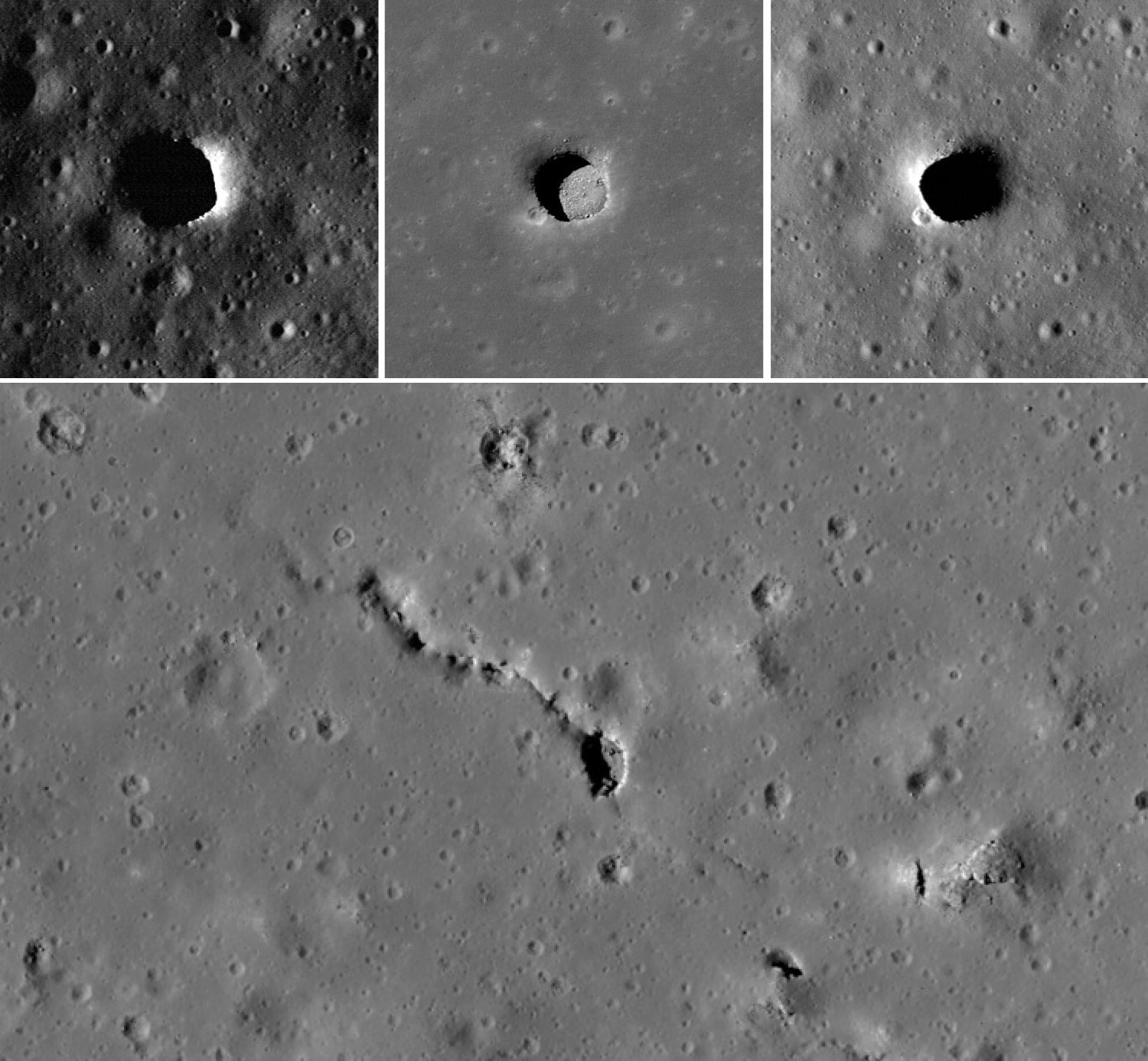History and Significance of NASA Moon Caves

Nasa moon caves – NASA’s exploration of lunar caves has its roots in the Apollo era, when astronauts first discovered these intriguing features during their moonwalks. In the decades since, scientists have recognized the immense scientific potential of these caves, which offer a unique glimpse into the moon’s geological history and may harbor evidence of past or present life.
Lunar caves are formed by lava tubes, which are created when molten lava flows through the moon’s crust and then drains away, leaving behind a hollow space. These caves can be vast and complex, with some extending for kilometers and containing multiple chambers and passages. The largest known lunar cave, Marius Hills, is estimated to be over 100 kilometers long and contains a number of large chambers, some of which are over 1 kilometer wide.
The scientific importance of lunar caves is twofold. First, they provide a unique record of the moon’s geological history. The walls of the caves are lined with minerals that were deposited by the lava that formed them, and these minerals can be used to date the caves and to understand the conditions under which they were formed. Second, lunar caves may harbor evidence of past or present life. The moon’s surface is constantly bombarded by radiation from the sun, which can damage or destroy organic molecules. However, the interior of a lunar cave would be shielded from this radiation, and it is possible that organic molecules could survive there for billions of years.
Exploring lunar caves is a challenging and complex undertaking. The moon’s surface is covered in a layer of dust that can make it difficult to navigate, and the caves themselves can be dark, cold, and dangerous. However, the potential rewards of exploring these caves are great, and NASA is planning a number of missions to explore them in the coming years.
Challenges of Exploring Lunar Caves
- The moon’s surface is covered in a layer of dust that can make it difficult to navigate.
- Lunar caves are often dark, cold, and dangerous.
- The equipment needed to explore lunar caves is heavy and bulky.
- The moon’s gravity is only one-sixth of Earth’s, which can make it difficult to move around.
Exploration Methods and Technologies

Exploring moon caves requires specialized methods and technologies to overcome the challenges posed by the harsh lunar environment. NASA scientists and engineers have developed various techniques and equipment to access and study these subterranean structures.
One of the primary methods for accessing moon caves is through the use of robotic rovers. These rovers are equipped with cameras, sensors, and other instruments that allow them to navigate the cave’s terrain, collect data, and transmit it back to Earth for analysis.
Equipment and Techniques, Nasa moon caves
The equipment used for moon cave exploration includes:
- Cameras: High-resolution cameras are used to capture images of the cave’s interior, providing a detailed record of its structure and features.
- Sensors: Sensors are used to measure temperature, humidity, and other environmental conditions within the cave, providing insights into its habitability and potential for scientific research.
- Drilling equipment: Drilling equipment is used to collect samples of rock and soil from the cave’s walls and floor, allowing scientists to study the cave’s geological composition and history.
- Lighting systems: Lighting systems are used to illuminate the cave’s interior, enabling scientists to see and navigate the cave’s features.
Techniques employed by NASA scientists and engineers include:
- Remote sensing: Remote sensing techniques, such as radar and lidar, are used to map the cave’s exterior and interior, providing a detailed understanding of its structure and topography.
- Computer modeling: Computer modeling is used to simulate the cave’s environment and predict its behavior under different conditions, helping scientists to plan exploration missions and mitigate risks.
Limitations and Advancements
Moon cave exploration faces several limitations, including:
- Harsh environment: The moon’s extreme temperature variations, radiation exposure, and lack of atmosphere pose significant challenges to equipment and human explorers.
- Limited access: Access to moon caves is limited by the availability of suitable landing sites and the need for specialized equipment and techniques.
Advancements in technology are continuously pushing the boundaries of moon cave exploration. These advancements include:
- Improved robotics: The development of more advanced robotic rovers and other robotic systems is enabling scientists to explore deeper and more complex moon caves.
- Miniaturization of equipment: The miniaturization of equipment is making it possible to pack more instruments and sensors into smaller packages, allowing for more comprehensive exploration.
NASA’s moon caves, shrouded in mystery and speculation, have sparked imaginations for decades. From the depths of these lunar labyrinths, tales of forgotten civilizations and extraterrestrial encounters have emerged. But amidst the celestial intrigue, there lies a down-to-earth connection to J.D.
Vance’s wife , Usha Chilukuri, who holds a doctorate in political science and has dedicated her career to empowering communities. As the moon’s enigmatic caverns continue to beckon, the echoes of human aspirations and connections resonate within their ancient walls.
The discovery of moon caves by NASA has sparked renewed interest in the potential for human habitation on the lunar surface. The caves, which are believed to be formed by ancient lava flows, could provide shelter from radiation and extreme temperatures.
While the exploration of these caves is still in its early stages, some experts believe that they could eventually be used as a base for future lunar missions. Bill Ackman , the founder and CEO of Pershing Square Capital Management, has expressed interest in investing in the development of lunar caves.
Ackman believes that the caves could be a valuable asset for future space exploration and could potentially lead to the development of new technologies and industries.